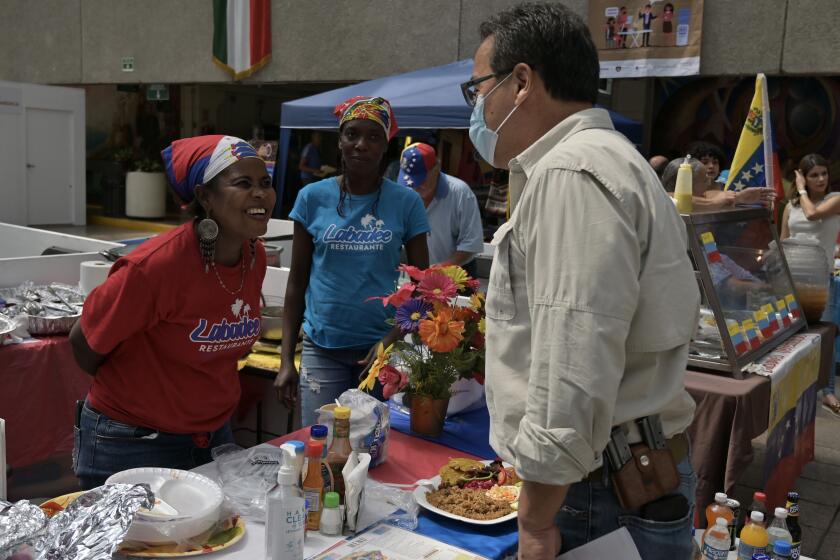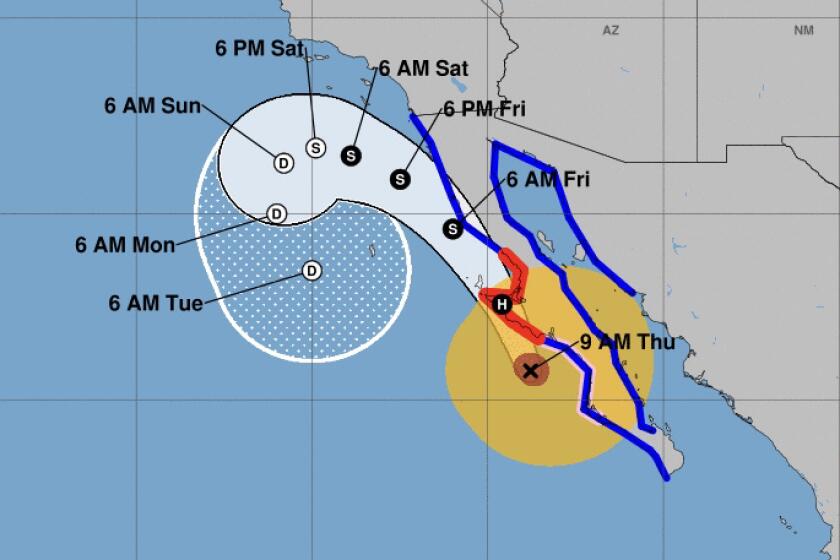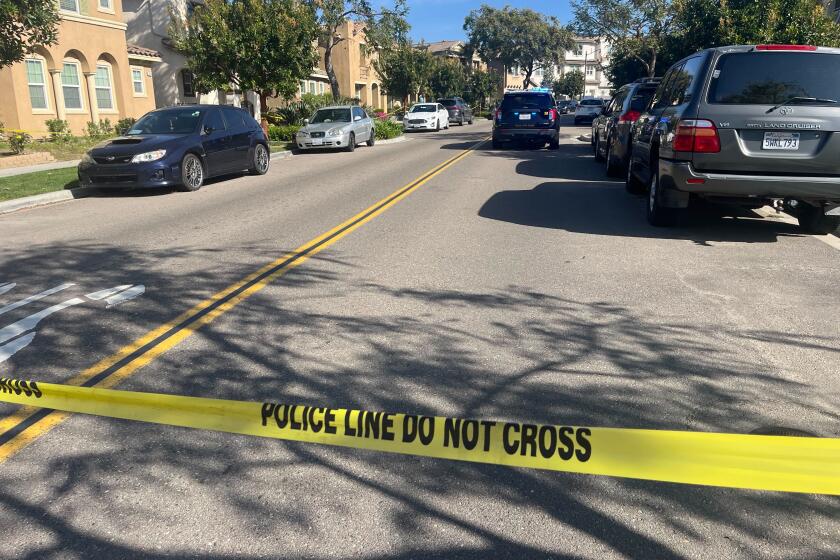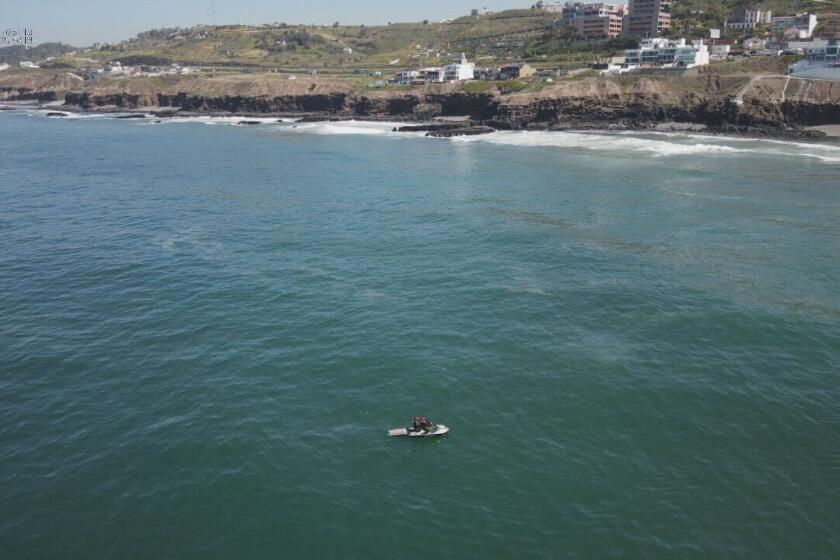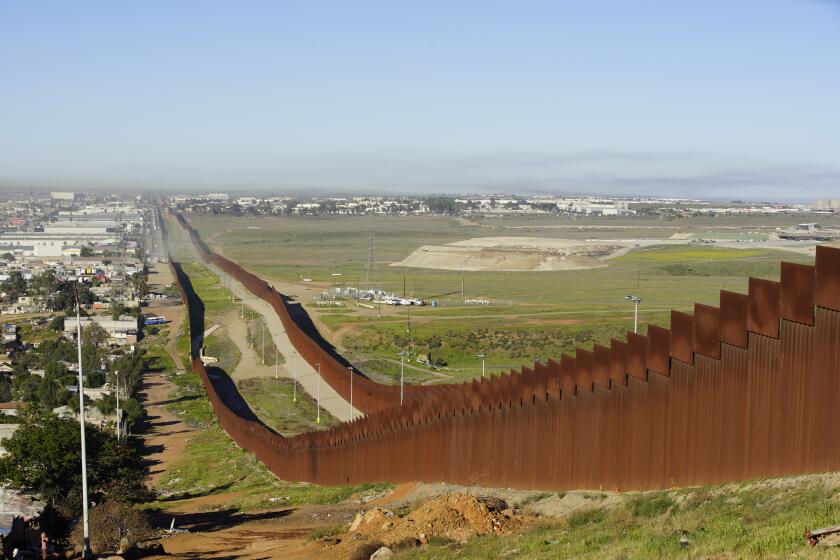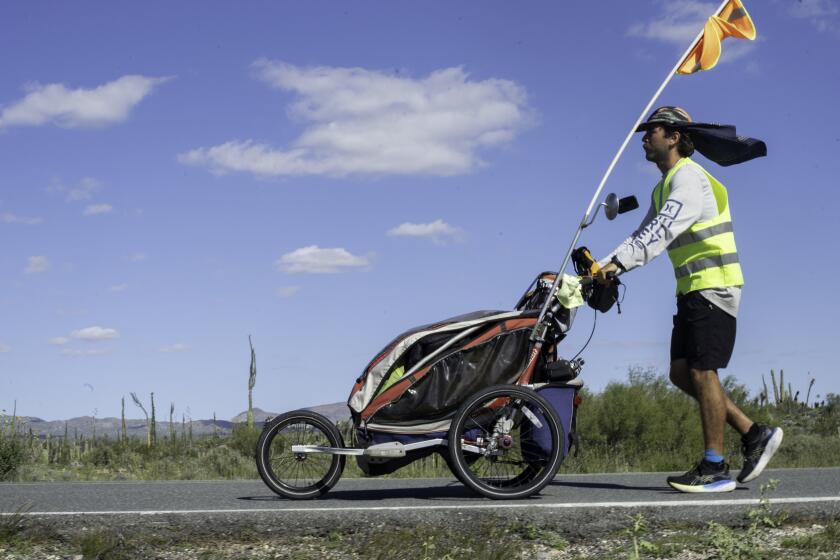Border reopens smoothly to cheers, hugs and tearful reunions

Northbound lines weren’t as long as expected in Tijuana, and traffic moved steadily into San Diego through the day
The U.S.-Mexico border reopened smoothly Monday after more than a year and a half of restrictions brought on by the COVID-19 pandemic, ushering in a day of tearful reunions among families and renewed hope to small businesses.
The milestone moment came with shorter lines and less traffic than anticipated, leaving international land travelers pleasantly surprised.
And while communities on both sides of the border heaved a sigh of relief at the easing of restrictions, they are also bracing for what could be heavy traffic, long waits and crowds at the land ports in coming days. The reopening comes just as the holiday season ramps up, which could boost shopping and stimulate the local economy.
The COVID-19 restrictions put into place in March 2020 have had enormous economic and social impacts, especially on communities and families split by the border. In Mexico, the effects have been devastating on families that depend on the informal work often done during short day crossings into the U.S.
Crossings at the land borders with Canada and Mexico have been largely restricted to workers whose jobs are considered essential to the United States. The easing of restrictions now allows foreigners or tourists who are fully vaccinated against the coronavirus to legally enter the United States regardless of the reason, as long as they have proper documentation.
“Today is such an important day for all of us ... 19 months was a long time,” said County Supervisor Nora Vargas, highlighting cross-border families who have not been able to reunite since the onset of the pandemic.
“We want everyone to come. We are very happy that we have the opportunity for our communities to integrate again, since many families have not seen their grandparents, their uncles and their relatives,” she said.
At the San Ysidro Port of Entry, every booth appeared to be staffed with U.S. Customs and Border Protection officers, who checked some people for proof of vaccination before waving most through. Fewer booths had been open during the previous 19 months of pandemic-era restrictions.
The restrictions kept mostly Mexican citizens with visas or border crossing cards from visiting the United States. U.S. citizens and legal permanent residents weren’t as widely affected, because they can’t be stopped from returning home to the United States after crossing into Mexico, regardless of their reason. Mexico never closed its northern borders to incoming visitors.
Those who did cross daily, mostly essential workers, often faced brutal hourslong northbound traffic during the pandemic.
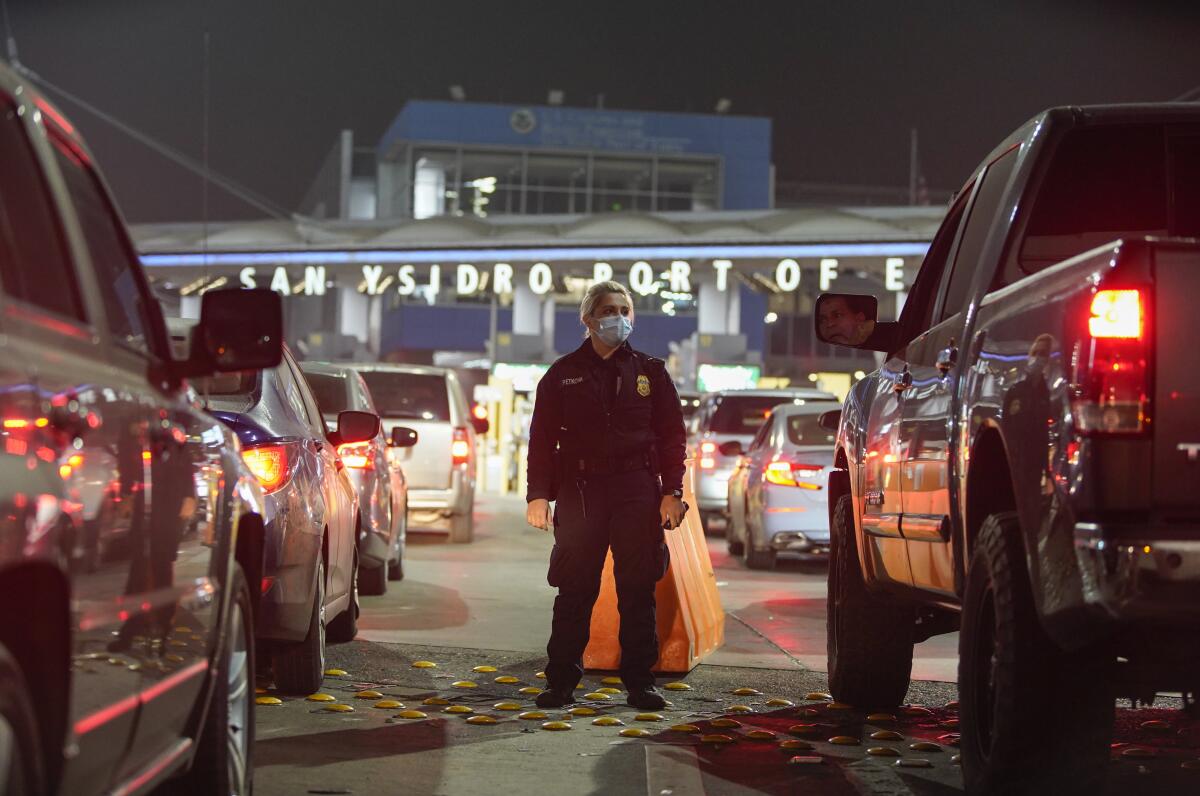
Midnight traffic
On Sunday night, hundreds of cars formed lines stretching back miles into Tijuana waiting for the clock to strike midnight, as tourists planned to cross into San Diego during the first hour of eased restrictions. Many said they used that strategy to try to avoid the peak rush-hour traffic later Monday morning.
María Galaviz, who lives in San Diego, went to Tijuana on Sunday to pick up a niece who had not crossed the border into the U.S. for nearly two years because of the restrictions.
They got into the line to cross back into San Diego around 8 p.m. Sunday, but the line moved much faster than they expected.
When they crossed the border earlier than planned, they said they were sent to a secondary inspection, where U.S. border officers asked them to return to Mexico and wait until midnight to cross again.
Galaviz said these months of border closures were very difficult for her family.
“A hug is not the same through a video call as in person,” she said.
By dawn Monday, neither the vehicle nor the pedestrian lines to enter the United States at San Ysidro were nearly as long as anticipated. Tijuana city officials estimated a 35 percent reduction in normal traffic for a Monday morning at rush hour.
Some daily or weekly commuters likely tried to avoid the crowds, opting to cross earlier or later in the week.
“The border crossing has always been a temperamental monster in the sense that any kind of news happening on either side of the border will affect it,” said Salomón Maya, a Chula Vista resident who traveled to his cousin’s wedding in Baja California this weekend and returned Sunday.
Border officials warned that as the volume of travelers increases, so will wait times. CBP recommended nonessential travelers avoid crossing at peak times, including 4 a.m. to 9 a.m. on Mondays through Fridays, and 2 p.m. to midnight on weekends.
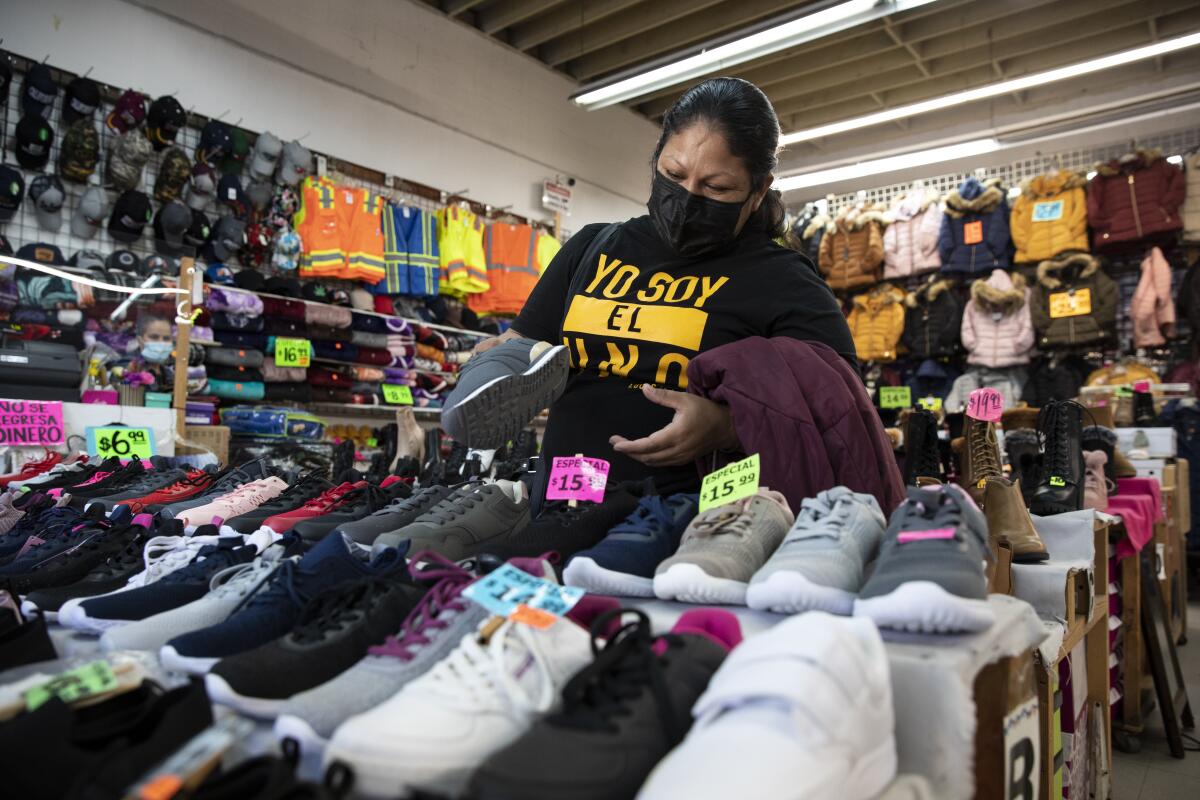
Businesses rejoice
Local officials from both sides of the border gathered Monday morning outside the PedEast crosswalk to celebrate the reopening of the border.
“This reopening comes at an especially critical time because it allows local businesses to seize the economic opportunity presented by the holiday shopping season,” said San Diego Mayor Todd Gloria.
Small business owners in San Ysidro were counting down the days to this moment — 597 days to be exact.
Olivia Campos, owner of Carolin Shoes, arrived to work an hour earlier than usual to have everything ready and to welcome back clients who crossed the border on tourist visas.
“I imagined that I was going to see a lot of people, that we were going to be like crazy serving clients, but for the moment everything is calm,” said Campos, who has operated the store in San Ysidro for more than a decade.
“It is (our) hope that everything will improve and that we will come out of this hole we are in right now,” she added.
Eustolia Santiago and her neighbor Adelina Arellano made the trip from Ensenada Monday morning. They estimated that they waited for about an hour to cross at San Ysidro.
“We were dying to come to buy some tennis shoes,” said Santiago.
They said they wanted to cross Monday for fear that the border would close again later.
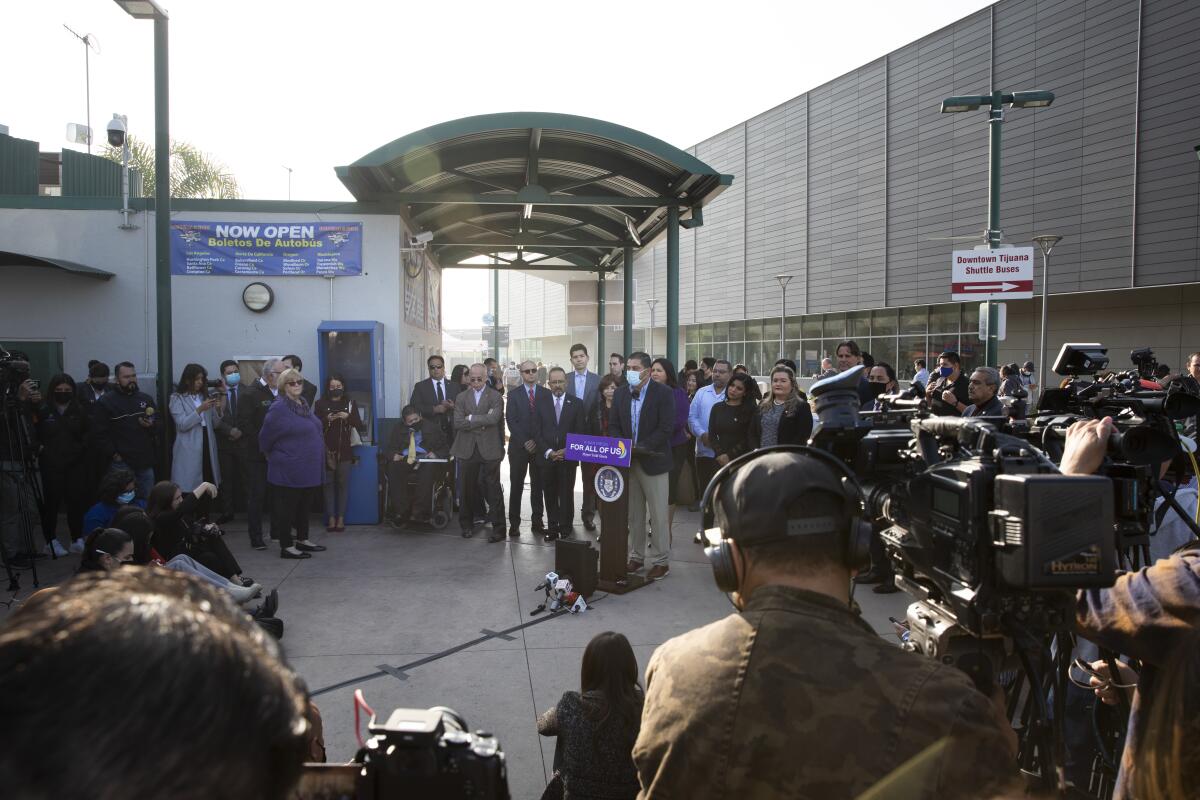
While communities farther to the north have been able to bounce back from the economic shutdowns during the pandemic, border communities have lagged behind.
Alex Espinoza, who helps his mother in the Rossy’s Fashion business on San Ysidro Boulevard, agreed that the return of tourists is vital for reactivation of the economy. The business was able to survive with the support of government programs and loans.
“They were very difficult months, not only for us, but for many of our neighbors,” he said. “Many people had to close, unfortunately.”
In San Ysidro, 276 businesses reportedly closed for good, according to Jason Wells, executive director of the San Ysidro Chamber of Commerce.
He estimates businesses in the city lost $1.3 billion of sales to COVID-19-related restrictions on nonessential travel, plus 2,200 jobs.
Wells and other public officials in border communities had been advocating for the restrictions to be lifted sooner, saying they were left in place because border communities lack representation in Washington. Retail tourism was the second-biggest contributor to San Diego’s economy before the pandemic.
About 80 percent of the businesses in San Ysidro depend on cross-border clients, mostly those with tourist visas.
“We can finally breathe here in San Ysidro,” said Wells. “Today we are welcoming all Mexicans with open arms.”
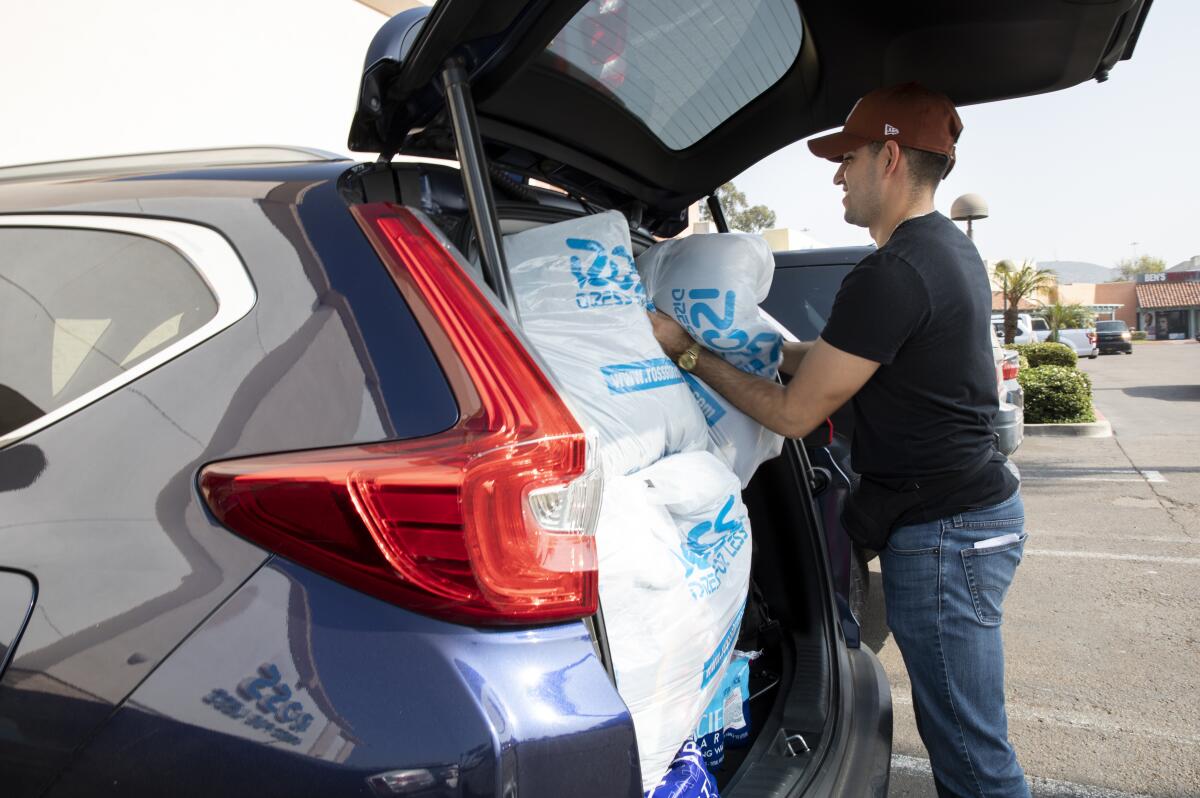
Monitoring the line
María de Jesús Ramírez, a Tijuana resident, did not plan to go shopping on Monday.
However, she took a look at the Facebook group “Cómo Está La Línea” (How’s the line?) and realized that the lines to cross the border were not as long as she thought they would be. So she and her family got in the car and headed north — to Ross Dress for Less.
The discount store has been featured in several pandemic-themed memes showing how Mexican residents longed to return to their cross-border shopping habits. Late Monday afternoon, social media users shared videos of long lines at Ross stores in border regions. Some lines appeared longer than the pedestrian lines to cross into the United States earlier that morning.
José Pablo, who lives in Tijuana, and his father, Ramiro Amezcua in San Diego, also went to Ross.
Seeing no lines in news reports and on social media, Pablo decided to cross the border after several months to try to get his Christmas shopping done.
His father did not hide his excitement to know that now his children, including Pablo, will be able to cross the border as before.
“I am very happy,” Amezcua said.
Asylum seekers left out
Watching the lines of pedestrians file quickly into the San Ysidro Port of Entry were four asylum seekers — one from Colombia and three from Haiti. Despite opening for tourists, the border is still not open to asylum seekers.
“All we can do is watch,” said one of the Haitian men.
At a nearby tent camp of migrants that has blocked the western entrance to the port of entry since February, children chased each other on bicycles, and women washed clothes in a pair of plastic tubs.
Tijuana police monitored the entrance to the camp created by a newly constructed fence limiting its expansion.
“We have more hope,” said a man from the Mexican state of Guerrero when asked about the border reopening to tourists.
He said he’d been at the camp for about a month with his wife and three children. He fled death threats back home as well as discrimination faced by one of his children who identifies as a trans boy.
He worried about the person who threatened him finding him in Tijuana. He doesn’t believe he will be safe until he reaches the United States.
A Honduran woman making food to share with fellow migrants at the camp also said that the change makes her feel more hopeful that her wait will soon be over, and that the United States would give her a chance to show the evidence she had brought about her family’s case.
She feels like a caged animal now that the city put a fence around the plaza, she said, and she lamented how much donated food had spoiled in the makeshift kitchen after the city cut off the camp’s electricity last week.
“If I didn’t have a reason to flee my country, I wouldn’t be here,” she said. “We lost everything we had when we fled.”
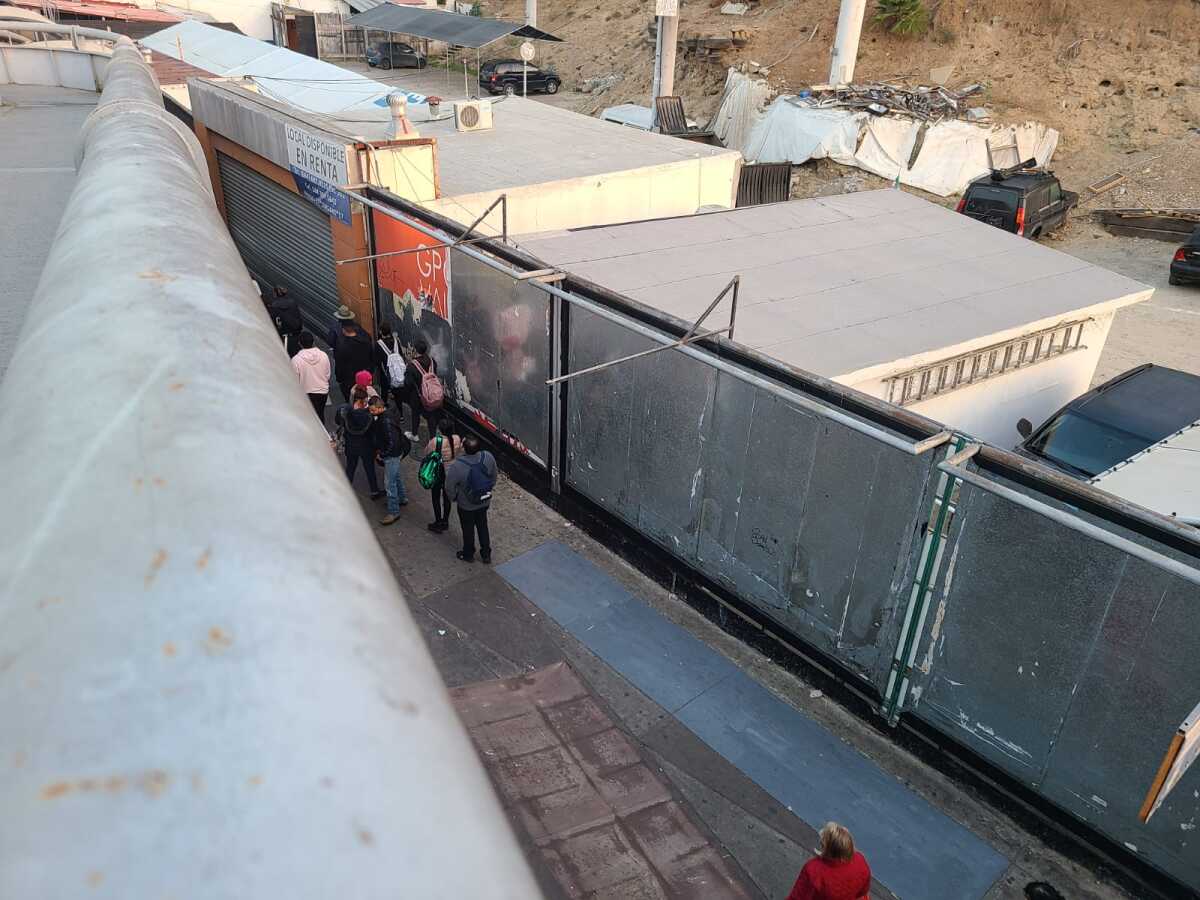
)
Updates
5:14 p.m. Nov. 8, 2021: This story has been updated with additional information.
Get Essential San Diego, weekday mornings
Get top headlines from the Union-Tribune in your inbox weekday mornings, including top news, local, sports, business, entertainment and opinion.
You may occasionally receive promotional content from the San Diego Union-Tribune.






